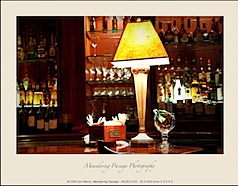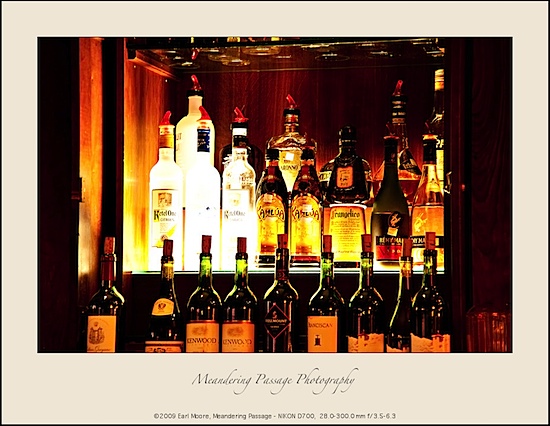As I was importing and filtering photos from this past weekend I was thinking about which I liked and what it was about them that appealed to me.
Also playing in the back of my mind was a recent post by Paul concerning photographically capturing the mood and the feelings he’s been experiencing on his weekly commutes from his home in Charlotte, NC, to his job in Charleston, SC–I can only imagine how wearing that must be.
This jumble of thoughts made me consider the essence of photography when enticing emotional reactions via photographs.
I know I’m probably missing factors but these are the ones that quickly came to mind.
Light:
“Light makes photography. Embrace light. Admire it. Love it. But above all, know light. Know it for all you are worth, and you will know the key to photography.” – George Eastman, founder of Eastman Kodak Co.
Even the word photography is derived from two Greek words which literally means “light writing” or “writing with light.” Light is the essence of photography which allows us to capture images on light sensitive surfaces, film or digital sensors.
Zero Light = No Photograph (with a normal film or digital camera)
The effective use of light can be the difference between a sensational photo or a so-so one. That doesn’t mean only one certain type of light can effectively product a great photo.
Sometimes I think understanding light/lighting is part science and part voodoo magic, I’m still working at the understanding of light as it applies to using it to project a specific impression or impact in a photograph.
Light has an influence upon Human beings we are only beginning to understand. Light determines our sleep/wake cycle and during long periods of low light (winter) some people suffer winter depression. I love a sunny day, but in the evenings I often working in lower lighting because I find it has a calming effect.
 The level and tone of light is used in design to set mood or to illicit responses. For instance, the bar in which I took these photographs certainly used light and color for a feeling of warmth, safety and coziness. It’s a place to be comfortable, setting a while, have conversations and a drink with friends (and spending money.)
The level and tone of light is used in design to set mood or to illicit responses. For instance, the bar in which I took these photographs certainly used light and color for a feeling of warmth, safety and coziness. It’s a place to be comfortable, setting a while, have conversations and a drink with friends (and spending money.)
Color:
Color is the byproduct of the spectrum of light, as it is reflected or absorbed, as received by the human eye and processed by the human brain. Color, this byproduct of light, is also a important design element. With it you can set moods, foster desired audience response or create a path for the eyes to follow.
Warmer colors tend to move toward you while cooler colors move away from you and bright colors attract our eyes first.
Color can have a physical effect on the human body and our emotions:
Red is all about energy and vitality, but as you’ve seen above, it can also indicate anger. And of course it’s associated with sexuality as well. Pink, though, can provide a sense of being cared for; it’s more about nurturing and maternal love.
Orange is stimulating, good for times when we just can’t seem to get started with something. Its lighter version, peach, may be useful for exhaustion due to stress.
Yellow is good for mental activities like reasoning and analysis. It can promote self-confidence and is helpful in situations when you need to be more optimistic.
Green tends to make most people think of nature, since so much of the natural world is green. It’s about connections – with nature, or with our fellow humans. It’s also good for general stress, since it can help balance emotions.
Blue is soothing and relaxing. It can stimulate creativity. Light blue can denote quiet, and dark blue can be sedating. But too much dark blue can be depressing.
Purple is related to imagination, intuition, and insight. In some situations it can also be very peaceful.
White is definitely about peace. But it’s also associated with purity, which makes it good for “cleansing” – which could mean purification, or maybe just clarification.
Black may make some people think of depression, but it doesn’t have to. It’s a very dramatic color; many artists wear nothing but black. It can denote mystery, something hidden – or maybe an introvert who’s been around crowds too long could use it to “hide” from people. In this sense, it can be a very protecting color.
Gray is a common color for business suits, and in those instances it can indicate independence, self-control, and self-confidence. But some color specialists think it’s also about ambiguity and indecision; after all, it isn’t black, and it isn’t white, either.
Brown is the color of earth, and be just as “grounding.” It’s good for introducing stability to an otherwise insecure situation. But too much of it can take stability to its extreme – stagnation.
While these responses to colors are stronger when used in larger areas of design, we also respond to colors in photographs.
Subject:
Some subjects elicit more emotional response then others. A few quickly come to mind:
- babies, young children, for nurturing and love;
- baby/young animals, for the cute factor;
- fog, for mystery;
- severe weather, representing danger;
- running water, for feelings of movement and energy;
- extreme vistas, for amazement; and
- extreme lighting/color (sunrise, sunset, etc.) for breathtaking beauty.
Photographers are not immune to the alluring effects of these subjects.
Mood:
“For me, itâs all about the feeling of being there, of taking the viewer to the location of the photo to feel like I did when the shot was taken. When you experience these sensations as youâre taking the shot, you know the viewer will, too, as s/he looks at the image.” – Andy Long
Mood is individual and subjective. People have varying moods and so can photographs. Often moods are tied to our experiences and so a photograph may elicit different moods and different levels of individual response intensity.
What works for one person may not work that same way in another.
With moods, success is often not eliciting the exact same mood response in everyone, but in eliciting some type of emotional response in many/most people. Then you’ll have captured something in your photograph(s) which touches people, even if not in the exact same way.
Wrap-up:
We can never exactly know what someone may feel when they look at out photos–we can only try and express/capture what we felt at the moment we took it.
That’s difficult enough! :-)
What is Color – DevX.com
emotion of color – creative behavior
Color and Mood-How Color Affects Our Emotions – Associated Content Lifestyle
Creating Mood in Photography – Picture Correct
Discover more from Meandering Passage
Subscribe to get the latest posts sent to your email.

